Blog Series Back to School for New ESL and Multilingual Learner Teachers
Episode #1 Why Building Relationships with Multilingual Learners Matters
Starting the school year by prioritizing relationships is powerful for all students—but for multilingual learners (MLs), it’s essential. MLs are not only learning academic content, but also navigating new languages, unfamiliar systems, and cultural expectations that may differ greatly from what they’ve known.
***Disclaimer: In this blog, the terms ESL students (English as a Second Language), ELLs (English Language Learners), and ML (Multilingual Learners) are used interchangeably. While “Multilingual Learners” is becoming the more widely accepted term, “ESL students” and “English Language Learners” are still commonly used in various contexts. My aim is to be inclusive and clear to all readers, regardless of the terminology they are familiar with.When we build strong, trusting relationships with these students and their families, we create a safe space for risk-taking, language development, and academic growth.
The Research Behind Relationships
Research shows that when MLs feel safe, welcomed, and included, they are more likely to engage, take academic risks, and develop language proficiency (Cummins, 2000; García & Kleifgen, 2010). Establishing trust creates a low-anxiety environment that supports language acquisition (Krashen, 1982).
Why It Matters
1. Trust Fuels Learning
Students learn best when they feel safe, seen, and valued. For multilingual learners, strong relationships with teachers and peers help reduce the anxiety that often comes with language barriers or fear of making mistakes. A warm connection signals: You belong here.
2. Language Development Grows from Interaction
Language acquisition thrives in rich, meaningful interactions. When students feel comfortable, they are more likely to participate, take academic risks, and engage in conversation—all key to developing their English language skills.
3. Cultural Identity Should Be a Strength, Not a Barrier
When we honor students’ home languages and cultures, we affirm their identity. This can be a huge confidence booster, increasing motivation and engagement in learning.
Check out this free My Name Project Activity.
How Can We Build Relationships with MLs
1. Start with Student Stories
Let students tell their story—through pictures, oral sharing, or writing. Use activities like:
- “All About Me”: read more about my 3 favorite BTS all about me activities here.
- Oral storytelling in their home language with peer translation
- Culture maps or family interviews
Tip: Let them use bilingual dictionaries, draw, or speak in their native language during the brainstorming phase to lower barriers.
2. Learn and Use Their Names—Correctly
Pronouncing a student’s name correctly is a powerful sign of respect. Ask students or families how to say it, and practice until it feels natural.
- Ask students or their families how to pronounce their name—and practice!
- Use tools like NameShouts or record students saying their names.
- Use Read Alouds to start conversations about MLLS's names and identity
Books like My Name is Yoon by Helen Recorvits and The Name Jar by Yangsook Choi are perfect for sparking conversations around identity, names, and belonging.
The Name Jar tells the story of a new student from Korea who considers changing her name to help her fit in. Through the kindness of classmates, she learns that her name is something to be proud of.
Check out this freebie: The Name Jar Back-to-School ESL Lapbook Project!
This name project:- Encourages interactive learning and student voice
- Supports personal identity and name exploration
- Includes 3 differentiated versions of the final page: “It means ...”“It is pronounced ...”and blank version for open-ended responses
- Includes drawing/photo spaces for visual expression
- Promotes cultural sharing and classroom connection
Want even more support for The Name Jar? Check out my Interactive Read Aloud resource
This comprehensive and engaging resource is designed to help ESL newcomers and multilingual learners deeply connect with The Name Jar while building vocabulary, comprehension, and confidence.
What’s Included:
- 15-Day Read-Aloud Pacing Guide: Daily lesson plans with three differentiated activity options (for newcomers, intermediate, and advanced students).
- Customizable Reading Packet Cover: Multiple ESL acronyms (ENL, ESOL, ELD, etc.) + blank version to match your district’s terminology.
- 45 Visual Vocabulary Cards: Color and B&W cards with images to support newcomer comprehension.
- Traceable Vocabulary Cards: Reinforces motor skills and vocabulary through coloring, tracing, and cutting.
- ELA Content Vocabulary Cards: 14 essential terms (like plot, setting, conflict) with images to support academic language.
- 15 Differentiated Worksheets: Focused lessons on predicting, character feelings, conflict, story elements, and more.
- “Jar Full of Names” Coloring Page: A fun way to reinforce story themes and creativity.
- “Our Class Name Jar” Activity: A collaborative identity-building activity that promotes classroom community.
- WH Questions Graphic Organizers: Three leveled 5W+H organizers for post-assessment.
- Story Elements Organizer: Helps students track character, setting, and plot with visual support.
And if you need to assess your MLLs' learning , pair it Color-by-Number Post Reading Assessment, designed with scaffolds for newcomers, beginners, and intermediate ESL students.
My Name is Yoon is another beautiful multicultural picture book read-aloud that explores the importance of names. This story will truly resonate with your students. In My Name is Yoon, a Korean girl grapples with adapting her name to fit into her new school environment. The book highlights the emotional journey of learning a new language while emphasizing the importance of honoring one’s cultural identity and heritage.
Both stories resonate deeply with multilingual learners who may be adjusting to a new culture and language. They provide validation, open up space for students to share their experiences, and help classmates build empathy and understanding. These read-alouds create teachable moments about respect, identity, and inclusion—right from the start of the school year.
3. Create Opportunities for Peer Connections
Structure your classroom so MLs can engage with peers in low-risk ways:
- Use pair-share routines
- Assign classroom buddies
- Offer sentence starters to help scaffold conversations
Build small moments of connection, like greeting students at the door in their home language, if possible.
4. Engage Families from Day One
Families of MLs often want to be involved but may not know how. Break down barriers by:
- Translating communication
- Inviting them to cultural events (e.g., Heritage Night, EL Potluck)
- Asking for photos, recipes, or stories to share in class
Send home a welcome letter in the family's home language (using tools like Google Translate or TalkingPoints). Click for more ideas here.
5. Celebrate Multilingualism
Post signs in multiple languages, create “Language of the Month” bulletin boards, and highlight the beauty of being bilingual or multilingual.
Invite students to teach the class a greeting in their language or share a short song or game.
Want a fun way to highlight your students’ linguistic diversity? Check out these free “I’m Multilingual! What’s Your Superpower?” posters—perfect for Back-to-School, Parent Nights, or any time of year.
6. Keep Communication Simple and Visual
Use visuals, gestures, sentence frames, and body language to reinforce spoken instructions. This helps MLs feel included while their language skills are still developing.
Use picture cues, realia, or labeled anchor charts to make content accessible from Day 1.
Relationships are not an “extra” in education—they're the foundation. For multilingual learners, strong relationships lead to confidence, connection, and greater classroom success. By making intentional efforts to know, support, and celebrate each student’s language and culture, we empower them to thrive.
5 Tips for Setting Up Your ESL Classroom for the First Week of School
First Week of School in ESL Classroom
Creating a welcoming environment for MLL/ ESL (English as a Second Language) students, especially newcomers, is crucial for their success and comfort in a new school setting. Here are five essential tips to help you set up your classroom and welcome ESL students and their families to your school community:1. Create a Welcoming Environment: Multilingual Bulletin Board
Display Flags of Countries: Hang flags from the countries your students come from. This visual representation celebrates diversity and makes students feel seen and valued.
2. Label Everything in the Classroom
Classroom Object Labels: Label all classroom objects, including desks, tables, whiteboards, and supplies. Use both words and images on the labels to help students quickly associate the words with the objects. This visual support is crucial for ESL students as they develop their English skills.
Library Labels: Organize and label your classroom library baskets. Clearly labeled bookshelves help students find what they need independently and encourage them to explore new reading materials.
Why Labeling is Beneficial for Multilingual Learners (MLLs)
- Enhance Accessibility and Understanding: Visual aids and clear labels provide immediate recognition, reducing confusion and increasing students' confidence.
- Promote Independence: Labeled items foster self-sufficiency, allowing students to navigate their new environment independently. By labeling everything in your classroom, you enable ESL students to locate and organize materials on their own. This fosters independence and reduces their reliance on teachers and peers for simple tasks, boosting their confidence.
- Support Language Development: Constant exposure to labeled items reinforces vocabulary acquisition, helping students learn and remember new words through daily interaction. Seeing words in context aids comprehension and retention, making language learning more effective and meaningful.
3. Provide ESL Survival Vocabulary and Newcomer Kit
-ESL Newcomer Kit: Designed to reduce stress and save time, this kit includes critical information and essential vocabulary for new ESL students and their families. It promotes inclusivity and ensures newcomers feel welcome and informed. Type in their name, id, homeroom info, lunch code, bus pick up times, etc. and a few essential vocabulary words in English and their language.
This kit should include common phrases and words they will need daily, helping them navigate their new environment more confidently.
Have these kits ready in the office to give to students upon registration, keep additional copies to distribute when you meet them, and provide another set during open school nights. Students may lose these papers, so having multiple copies on hand is essential.
4. Back to School Night: ESL Open House Brochure
An ESL open house night is a perfect opportunity to meet ESL parents and guardians, inform them about your ESL program, and create a strong foundation of support. In New York State, it is mandatory to hold this meeting within 10 days of a student's registration. Use this opportunity to welcome parents warmly and let them know you are their go-to person for any needs or concerns.
Every year, I provide parents with an ESL brochure that summarizes my program. This includes welcome signs in multiple languages and "Hello" signs posted around the building entry with room numbers. During the meeting, we explain our program, the number of minutes we serve our ESL students, and the model we use. We also discuss ESL accommodations in class and during testing, show parents videos in their languages about ELL programs in NYS, and provide tips on how to help their children, plus helpful free websites and resources. These sessions are crucial in setting our families and their children up for success.
5. Build Connections and Get to Know Your Students
Engage in All About Me Activities: The first few weeks are all about building connections and getting to know your students. This is probably the most important time of the year. Use this time to engage your MLLs in "All About Me" activities. Check out my previous post where I describe my three favorite activities to get to know my students. These activities help create a sense of community and allow you to understand your students' backgrounds, interests, and needs.
Setting up your classroom thoughtfully can make a significant difference in your ESL students' lives. By creating a welcoming environment, labeling everything, providing essential vocabulary, and building connections, you'll help your students navigate their new school with ease and confidence.
Happy BTS Teaching!
ESL Resource Meet
Would you like to receive more tips, tricks and freebies?
Let’s build classrooms where every voice matters, and every language is a bridge—not a barrier.
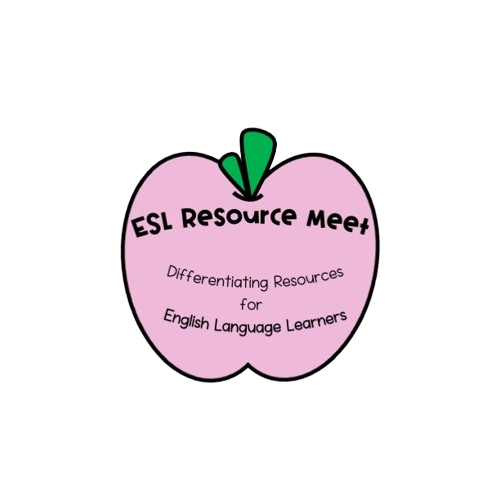




























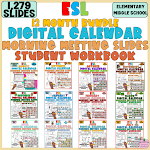


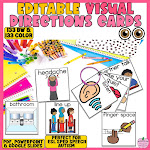













































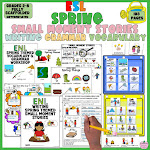




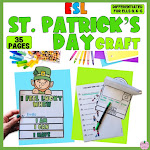
















































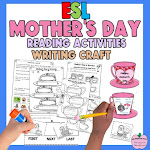
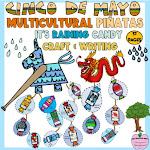
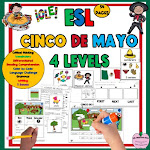
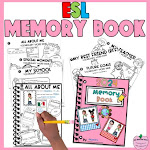





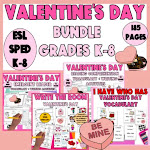




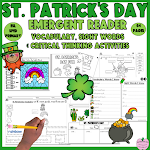



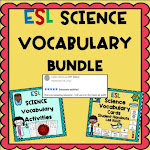




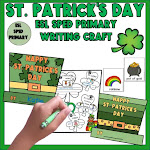

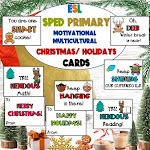


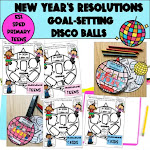
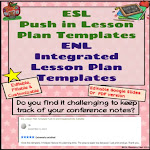




0 Comments